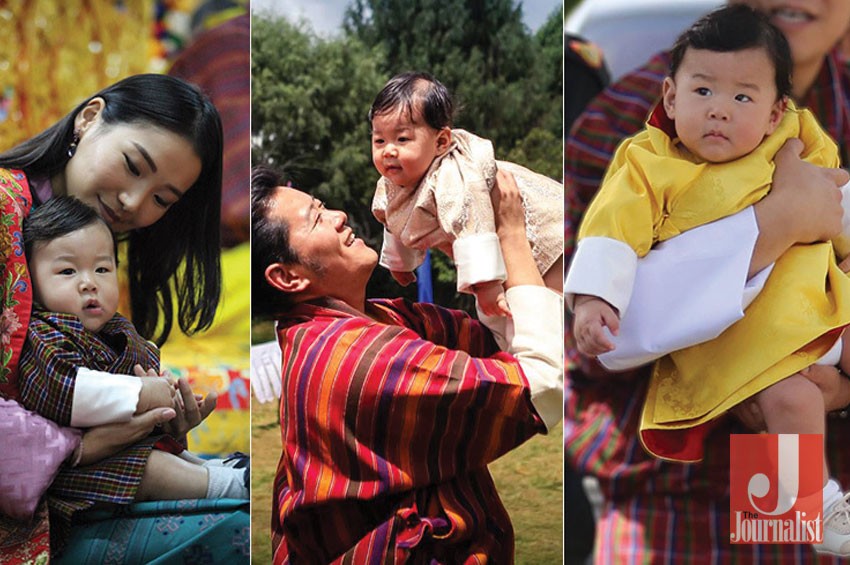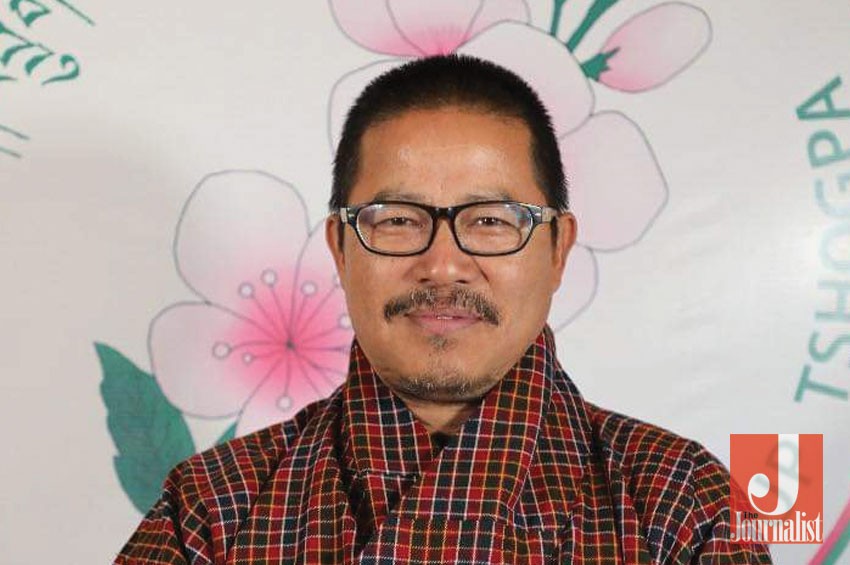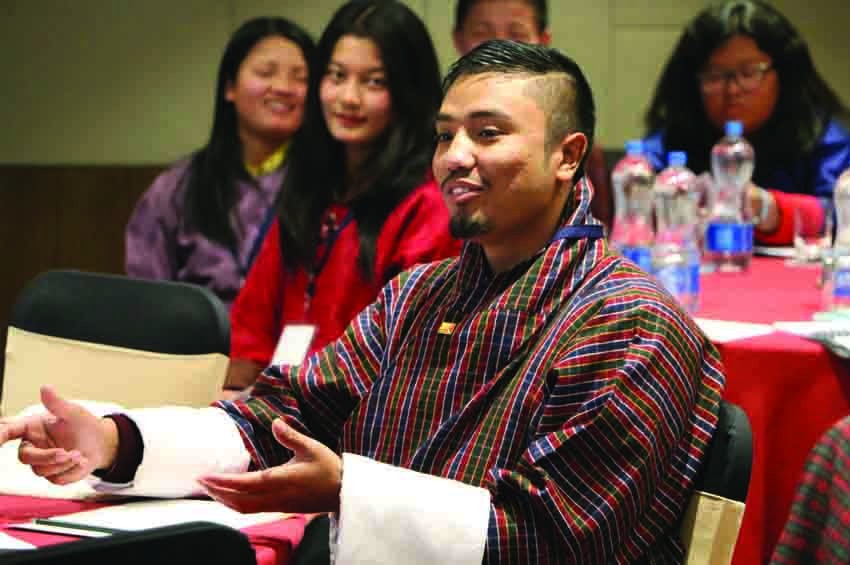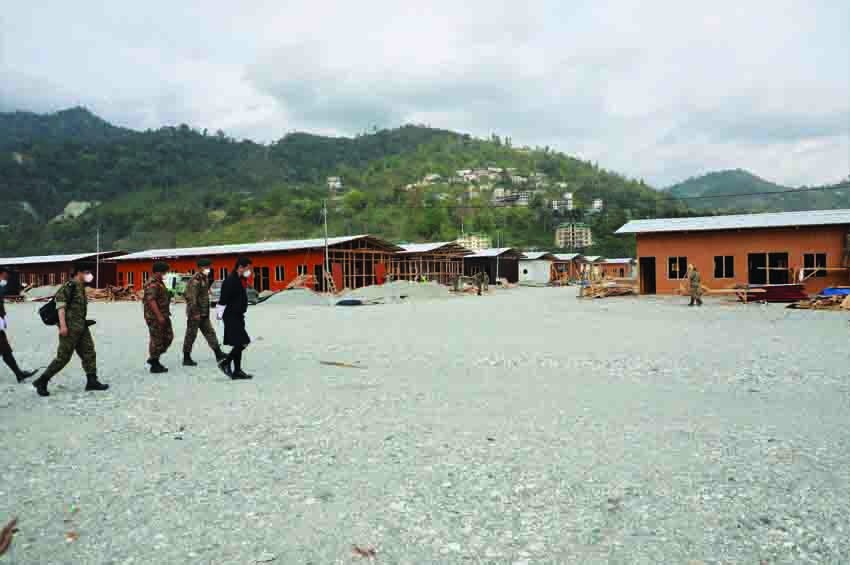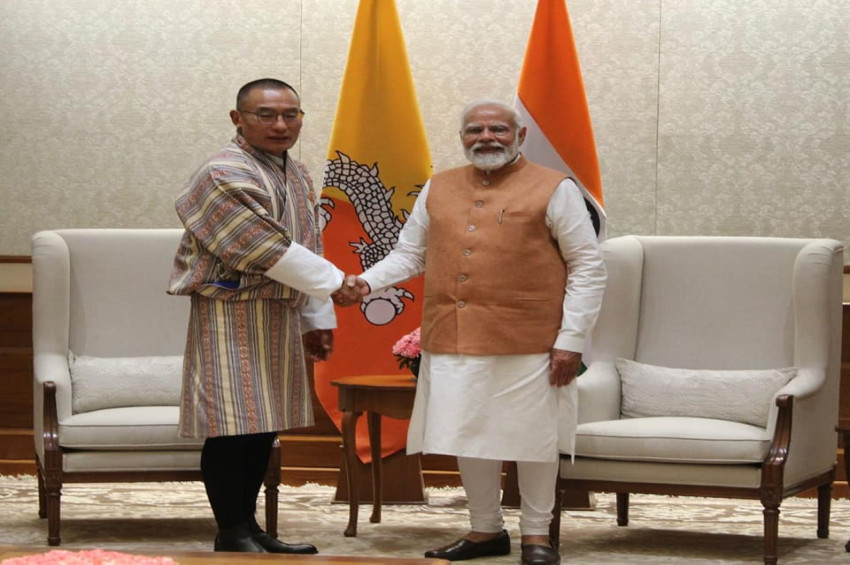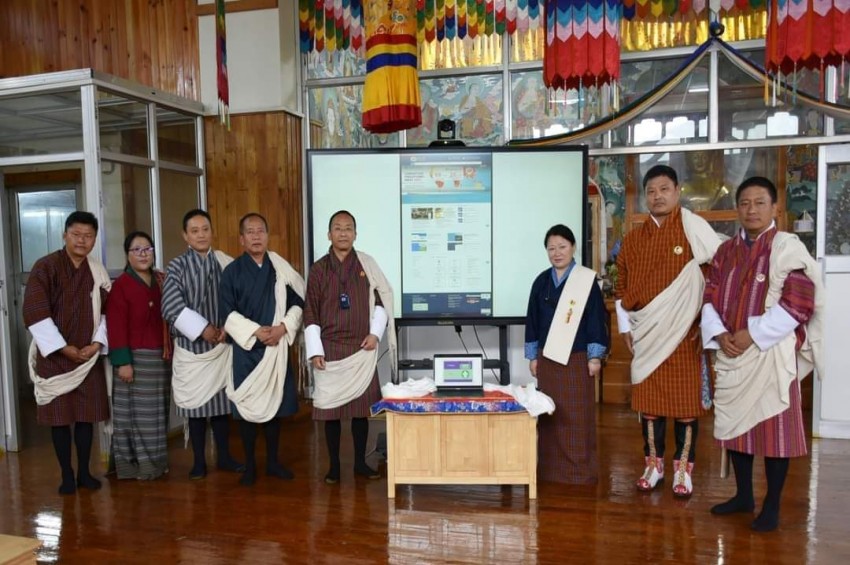On the 17th day of December, 1907, our ancestors from different parts of the country came together at Punakha, reposing their trust and faith in then Trongsa Penlop Ugyen Wangchuck, through the historic “Genja.” This led to a new system of governance in Bhutan and a new country, with a new system of governance was born. The Trongsa Penlop became Bhutan’s first hereditary Monarch and it was the beginning of what has become a story epical in dimension and mythical in content. And as the country celebrates its 114th National Day, it is imperative to narrate the extraordinary tale, the amazing story that began more than a century back and the roles of each of our Kings in weaving a country that has captured the imagination of the world.
Before venturing further, it is very vital to understand the regional and international dynamics that existed when the First Druk Gyalpo was crowned Bhutan’s first King and the times that followed. The 20th century saw two World Wars and the display of humanity’s brutality – the Ghettos, Hiroshima and Nagasaki. Closer to our borders, the Indian uprising against imperial Britain had reached its zenith. Towards the North, Chinese agression snowballed and Tibet was swallowed. Amidts all this, Bhutan, a new country that had neither economic nor military power, a nation hardly known to the world, secured herself and survived. This is one of the most amazing chapters of our history. And these chapters would not be there if not for our wise and visionary leaders, our Monarchs, the Wangchuck Dynasty.
Known as the Unifier, the First Druk Gyalpo established a new system of governance. While it is difficult to say if everyone living in the Bhutan of that time knew that the “Genja,” was signed or not, for the first time we got an identity as Bhutanese. We had one leader. The hereditary system established and endorsed left no room for ambitious strong regional chieftians to stake their claims as it happened in the past. After 1907, Bhutan saw the dawn of a new state politics, in which the leader fully assumed the responsibility for the betterment of the country. King Ugyen Wangchuck was no longer occupied with issues and feuds to attain or retain power for himself. He had other important concerns, such as the development of roads, education and health services and to improve the economic conditions of the people.
Simultaneously, December 17, 1907, saw the international demarcation of Bhutan as a separate country, unlike the princely Kingdoms that existed under British rule. A landmark achieved by the First Druk Gyalpo was the January 8, 1910, Treaty of Punakha signed with British India. The ten-clause Treaty contained an article that stated, “British India would recognize Bhutan’s independence while Bhutan would remain guided by the latter in her external relations”. Bhutan gained many benefits from this treaty like the formal settlement of border issues with British India, opening of the trade link and others. Of all, it placed Bhutan in a secure zone as an independent buffer state.
While history does not mention much about developmental activities initiated during the tenures of the First and Second Kings, it was not that they did not want to. The hurdle was lack of funds and the repeated requests, especially by the Second Druk Gyalpo to the British were futile. Nevertheless, the First Druk Gyalpo’s reign saw a group of thirty-four Bhutanese boys going to study in Kalimpong. Trained in various fields like medicine, engineering, forestry, agriculture and teaching, they formed the first core of modern Bhutan’s educated professionals. Thus, His Majesty laid the foundations for modern education in Bhutan. A small school was established in Bumthang, which was attended by Prince Jigme Wangchuck and some fourteen other students. Around 1912-1913, another school was established at Haa.
The Second Druk Gyalpo, known as the Consolidator, continued with the reforms initiated by his father. However, the hallmark of his reign is the 1949 Treaty signed with independent India. The imminence of independent India was a concern. Before India became independent, King Jigme Wangchuck sent a Bhutanese delegation to New Delhi to establish Bhutan’s sovereignty. Senior British officers supported Bhutan’s claims. In 1948, another delegation led by Gongzim Sonam Tobgye visited India to meet Indian Prime Minister Jawaharlal Nehru. King Jigme Wangchuck had demanded the return of all the areas in the duars which were not under tea cultivation or an increase in the subsidies according to the value of the land.
It was a successful talk and on August 8, 1949, the first treaty with independent India was signed. The signing of the 1949 Treaty is a milestone in the history of Bhutan and one of the biggest achievements of King Jigme Wangchuck. The Treaty secured the independence and sovereignty of Bhutan and quelled all apprehensions of Indian dominance over Bhutan. Bhutan agreed to be guided by India in its foreign affairs while it kept internal administration in its own hands. India returned to Bhutan the thirty-two sq. km tract of Dewathang and raised the subsidy to Rs 5 lakhs. India also agreed to permit free trade between the two countries.
On the social and economic front, the Second King made taxes uniform and also reduced them drastically. Some taxes were abolished. As mentioned earlier, the lack of funds impeded the Second King from initiating development projects. However, His Majesty initiated the process to build motor roads from India and establish wireless stations in the country. In the field of agriculture, he introduced the growth of cash crops in Southern Bhutan. At Bumthang, he experimented with rice cultivation. He established the direction in medicine, health care, education, a modern transportation service and adaptive agriculture that Bhutan was to take in the 1960s and 1970s.
The reign of Third Druk Gyalpo Jigme Dorji Wangchuck from 1952 to 1972 was a period of unprecedented reforms in Bhutan. Planned economic development in the form of the Five Year Plan (FYP) was introduced in 1961. Ties were established with countries other than India and in 1971, Bhutan became a member of the United Nations. Within the country, the Third King brought the people closer to governance through the establishment of the National Assembly in 1953. The Thrimshung Chenmo (Supreme Law) was adopted in 1959 and the High Court established in 1967. Bhutan’s first commercial Bank was estabished in 1968. These initiatives and reforms were later strengthened by his successors, especially the Fourth Druk Gyalpo. In many ways, the Third Druk Gyalpo laid the foundations for Bhutan’s development in all areas of governance. Due to this, he is remembered as the Father of Modern Bhutan.
A careful study of the Third King’s reign shows that before economic development, he established institutions required for development, such as the National Assembly. It was the beginning of participatory approach to development. He made himself responsive to its advice. Important decisions and appointments were also made in consultation with the National Assembly. Further, the establishment of the National Assembly and the way it functioned heralded the beginning of decentralization, delegation and democracy.
In the regional and international arena, the visit of Pandit Jawaharlal Nehru to Bhutan in 1958 and the subsequent introduction of the Five Year Plan (FYP) in 1961 through Indian assistance were the founding stones of an unparalleled relation that would develop between Bhutan and India. Politically, it ended all forms of ties that Bhutan had with neighbours in the North. Additionally, through Indian support and sponsorship, Bhutan became a member of several regional and international organizations and ultimately the United Nations in 1971. It was a major political boost as it strengthened Bhutan’s security and sovereignty.
The abolishment of serfs by the Third Druk Gyalpo in 1956 is another major social reform that was initiated. The other one which exists even today is the pension system. In 1962, Bhutan’s first retirement security system was initiated with the introduction of Gratuity by the Third Druk Gyalpo.
The economic initiatives undertaken by the Third Druk Gyalpo were the ultimate bridges for self-reliance in all areas. The projects implemented strengthened the country’s fiscal position and for the first time Bhutan met part of the expenditure of the Third FYP. Human Resource Development (HRD) in all areas began and the prospects of being employed in areas other than farms started. Trade with India increased as more products were exported. Initiatives for self sufficiency in food were instituted. Several schools, hospitals and other infrastructure were built.
His Majesty did not live long to taste the fruits of his labour. However, he laid a very strong foundation for economic development and political reforms that were taken up by his heir, His Majesty the Fourth Druk Gyalpo.
Bhutan’s era under the visionary leadership of His Majesty Jigme Singye Wangchuck was one where the country reaped the unprecedented benefits of socio-economic development. From 1972 till the voluntary abdication in 2006, His Majesty steered Bhutan and made it shine amidst the galaxy of modern nations. Architect of Gross National Happiness (GNH) and the only leader in modern history who led his soldiers at the frontlines to remove insurgents who had put the security of his country at stake, His Majesty is immortalized in the histories of Bhutan and the world.
Apart from His Majesty’s extraordinary contributions in the socio-economic development of Bhutan, the political reforms he instituted elevates him to an unparalleled platform. From the moment he took over the reins of governance, His Majesty embarked on a slow yet steady process for the historic transformation of Bhutan into a Democratic Constitutional Monarchy. At different intervals of time, new political reforms were introduced, which successfully led to the transition of Bhutan from an Absolute Monarchy to a Democratic Constitutional Monarchy. Justifiably called as the “Golden Era” in the history of Bhutan, the Fourth Druk Gyalpo’s reign saw Bhutan becoming a regional and global player. Revenue generators like hydropower projects and tourism were established. Infrastructure such as, roads, airlines and technology were introduced and strengthened. Education flourished, while health services were strengthened. Television reached the homes of Bhutanese. Bilateral and multilateral ties increased. The fact that His Majesty is affectionately known by so many names – the King of Destiny, The Great Fourth, The Bodhisattva King, The Dharma King – indicates the length and breadth of his greatness.
When His Majesty became King, Bhutan had just begun the Third Five Year Plan (FYP). Taking on the responsibilities of Chairman of the Planning Commission, His Majesty ensured that all plan periods were successfully carried out. It is the success of the plan periods which led to developments in all spheres of Bhutanese lives.
A comparative study of data in 1974 and 2006, the year the Fourth Druk Gyalpo voluntarily abducated, provides a vivid picture of development that ensued during the Fourth Druk Gyalpo’s reign. In 1974, there were 13,410 students enrolled in schools compared to about 151,260 in 2006. 56 health establishments existed in 1974, which rose to 715 by 2006. In 1974, a sparse network of 1,332 km of roads had been laid out. By the end of 2006, Bhutan had 4,544 km of motorable roads. Electricity generated in 1974 was four million units, compared to 3.357 billion units by the end of 2006. The first group of 20 tourists entered Bhutan in 1974. In 2006, 17,365 tourists visited the country.
Alternatively, several large-scale investments like Chukha Hydropower Project, Penden Cement Plant and major irrigation schemes were initiated outside the Plan. One of the landmark developments, soon after His Majesty’s Coronation, was the signing of the ambitious Chukha Hydro-Project in March 1974. It paved way for similar projects to be initiated within Bhutan. The reign of the Fourth Druk Gyalpo saw Bhutan’s entry into the age of Information Technology which started from the late 1980s. Digital telecommunication networks were expanded connecting different dzongkhags internally and with the outside world. The introduction of internet and satellite TVs in 1998 brought Bhutan closer to the globalized world.
Within the chronicles of the world, His Majesty the Fourth Druk Gyalpo is immortalized for having introduced the developmental concept of Gross National Happiness (GNH). It can justifiably be said that it is His Majesty and GNH that alerted the world, telling them that all is not well in the developmental sphere and that happiness, the ultimate aspiration of all human beings is neglected.
His Majesty’s life and reign has also been one of sacrifices – all for the country and its people. On December 15, 2003, one of the world’s smallest armed forces, led by their King entered the battlefield to drive away foreign militants who had made Bhutan their base and posed a huge threat to the nation’s security and sovereignty. In what surprised the world, the Fourth Druk Gyalpo and his band of soldiers, who had never fired to wound or kill someone drove away some of the world’s most feared militants. As rightly mentioned in an Indian newspaper: “Gone are the days when kings or heads of states personally led their troops into battle. …Now, rulers remain far away from the battlefield…The King of Bhutan and his son took up a brave fight-without bothering about their own safety – against the insurgents from India who took shelter in inaccessible jungles. He has thus become a role model……”
This was not the last. On December 17, 2005, as the Nation celebrated the National Day at Trashiyangtse, His Majesty announced that he would soon abdicate and elections for a democratic Bhutan would be held in 2008. Nothing, not even the tears of His subjects could make him reverse the decision. And on December 9, 2006, he voluntarily abdicated.
Describing the reign of the Fourth King would be an epic in itself. He introduced decentralization; gradually took all measures required for the transformation of Bhutan to a Democratic Constitutional Monarchy; put economic self reliance at the forefront of development and drove Bhutan to the vanguard of modern nations. When he abdicated in 2006, Bhutan’s transformation from a medieval village to a modern nation was complete.
Bhutan’s Fifth Custodian, His Majesty King Jigme Khesar Namgyel Wangchuck continues to guide and steer the country on an unparalleled path. Soaked in compassion, altruism, empathy, wisdom and vision, under the benevolent reign of His Majesty, Bhutan continues to progress on all fronts. Politically, the nation’s journey towards becoming a vibrant democracy proceeds without any deterrents. Till date, three successful general elections have been held leading to the election of three different governments. Guided by His Majesty, democracy is being consolidated.
On the socio-economic front, the country has made great leaps ahead. People are much more prosperous. Economic opportunities and platforms for realizing one’s full potentials are vast. Emphasizing that economic growth is paramount for a vibrant democracy; His Majesty has instituted several reforms that have opened the avenues for growth. And through the unprecedented touch of kidu, His Majesty continues to uplift the lives of those who are underprivileged and unfortunate.
Since taking on the responsibilities of King in 2006, His Majesty has instituted several reforms, established critical institutions, and further chiseled the gem that is DrukYul. Walking along the length and breadth of the country, His Majesty recognized the plight and challenges that people faced. This led to a social revolution in the form of land kidu. Understanding the importance of land in the people’s social and economic lives, on September 24, 2007, His Majesty commanded the National Land Commission Secretariat (NLCS) to resolve land issues once and for all. Following this, the NLCS carried out the National Cadastral Resurvey Program (NCRP) from June 2008 till December 2013. Based on the findings of the survey, an unprecedented number of people availed land kidu from His Majesty. From 2010 to February 2018, His Majesty has granted a total of 133,287.765 acres of land as kidu to 123,265 beneficiaries in 171 gewogs across the country. Land is an economic asset and as said by His Majesty during the 2016 National Day celebrations at Trongsa, an objective of the land kidu is “to empower and uplift people, and allow them to prosper.”
Similarly, in 2011, under the command of His Majesty, His Majesty’s Secretariat initiated a program to enhance the economic status of the people. Called as the National Rehabilitation Program (NRP), the objective was to contribute towards poverty reduction by enhancing sustainable livelihoods, through means like increasing the productive asset base of the beneficiaries, especially landless farmers and socio-economically disadvantaged communities. The program facilitated the creation and enhancement of income generation opportunities through the provision of essential socioeconomic facilities and services. Pro-poor interventions ranging from construction and renovation of houses, supply of agricultural inputs, and income-generating interventions are implemented under this initiative. It has benefited hundreds of people in the districts of Lhuntse, Samdrup Jongkhar, Pemagatshel and Haa.
The establishment of the Kidu Foundation on April 3, 2011 under the Office of the Gyalpoi Zimpon (OGZ) is a hallmark in His Majesty’s reign. This led to pro-poor projects and diversification of kidu. Today kidu has reached new heights benefitting the underpriveledged from education to health and basic needs.
In 15 years as King, His Majesty has given everything to the nation and people. Every reform and project instituted has the people at the center. From establishment of the Druk Holdings and Investments, the Royal Education Council, the Natural Resources Development Corporation Limited (NRDCL), Dharma Project in 2007; the Desuung Integrated Training Program in 2011; the Royal Institute for Governance and Strategic Studies (RIGSS) in 2013; the Bhutan National Legal Institute (BNLI), Bhutan’s first law school in 2015; the strengthening of the Local Government (LG) and introdution of the Royal Highlander festival in 2016; the launch of Gyalsung – National Service in 2017 and several others, His Majesty has always embarked towards the building of a “just and harmonious,” country.
His Majesty as leader, parent and guardian was best reflected as Bhutan, like all other countries, fought the COVID 19 pandemic. No leader in the world would have been personally involved in ensuring that the country and people are not affected by the pandemic as His Majesty was and still is. From March 6, 2020, when Bhutan reported the first COVID 19 patient, till today, His Majesty is at the forefront leading the fight against the pandemic.
As many people lost their jobs and business entities closed shop, the rays of compassion, empathy and generosity rose from the Golden Throne. In April 2020, the National Resilience Fund (NRF) was established at the command of His Majesty to provide economic relief to people through the Druk Gyalpo’s Relief Kidu (DGRK). The Relief Kidu granted monthly income support to individuals and loan interest payment support to borrowers for a period of one year (April 2020 – March 2021). During this period, 52,644 individuals applied for kidu and a total of Nu 2.25 billion was granted as kidu.
With the pandemic continuing to affect people, on April 22, 2021, His Majesty commanded the continuation of the DGRK for 15 more months, beginning April 2021. However, His Majesty commanded that efforts to replenish the NRF should neither disrupt the economy nor affect the development plans and projects of the government. His Majesty was against using government budget and borrowing from within and outside Bhutan.
In an unprecedented move, the NRF was funded in its entirety from His Majesty’s Kidu Fund and the Sungchob Fund. Between June 15 and July 15, 2021, 15,640,000 shares held in the names of Sungchob Fund and Kidu Fund were sold. Such actions of empathy and compassion can originate only from leaders who are manifestations of the Buddha of Compassion and who place welfare of the people at the heart of everything.
To monitor the borders, His Majesty has been constantly on the move, under the scorching sun and the heavy torrents. His Majesty even walked for five long days, beginning June 8, 2021 from Merak along the eastern border to Jomatsangkha. This followed after people in Merak and Jomotsangkha tested positive for the virus.
His Majesty has always embodied what Zhabdrung Ngawang Namgyel said 400 years ago. “My resolve is such that until the task is accomplished, I will persevere even if lightning should strike from above, the space in-between collapse, or the earth below move.”
If Bhutan is today a blessed land; if we are really fortunate for having born in this country, it is because of the Wangchuck Dynasty.
Copyright © 2024 The Journalist. All Rights Reserved.



